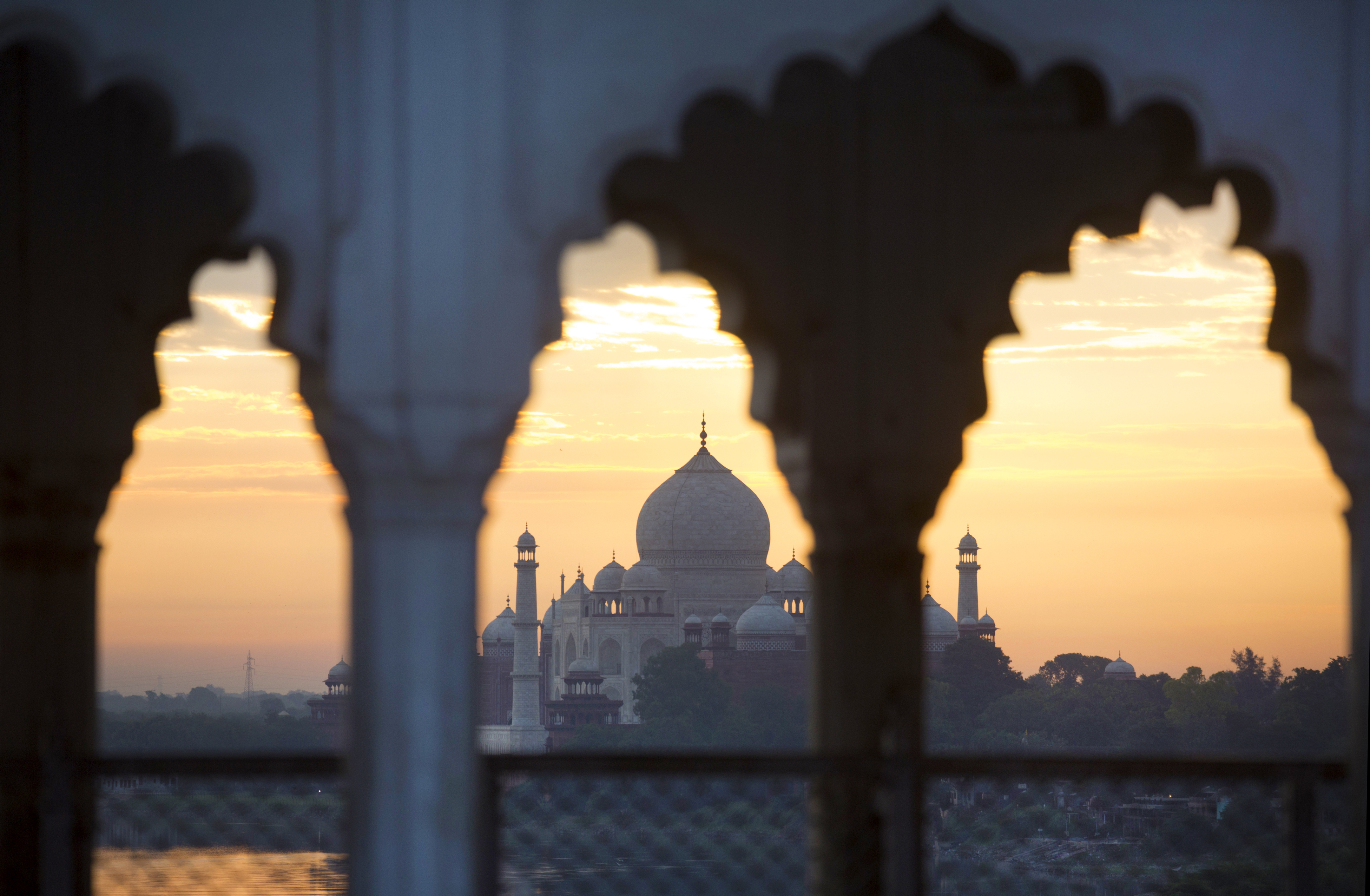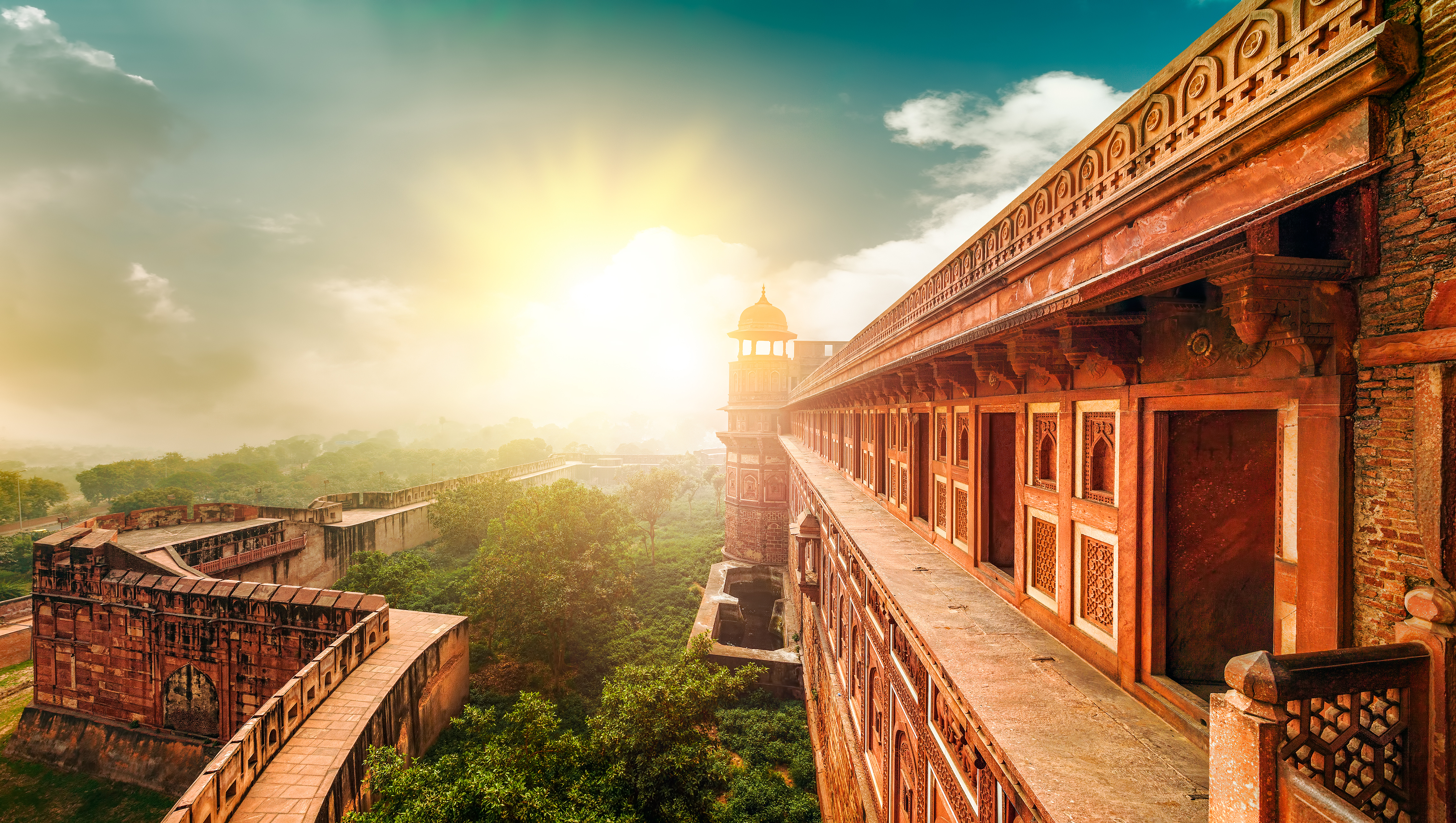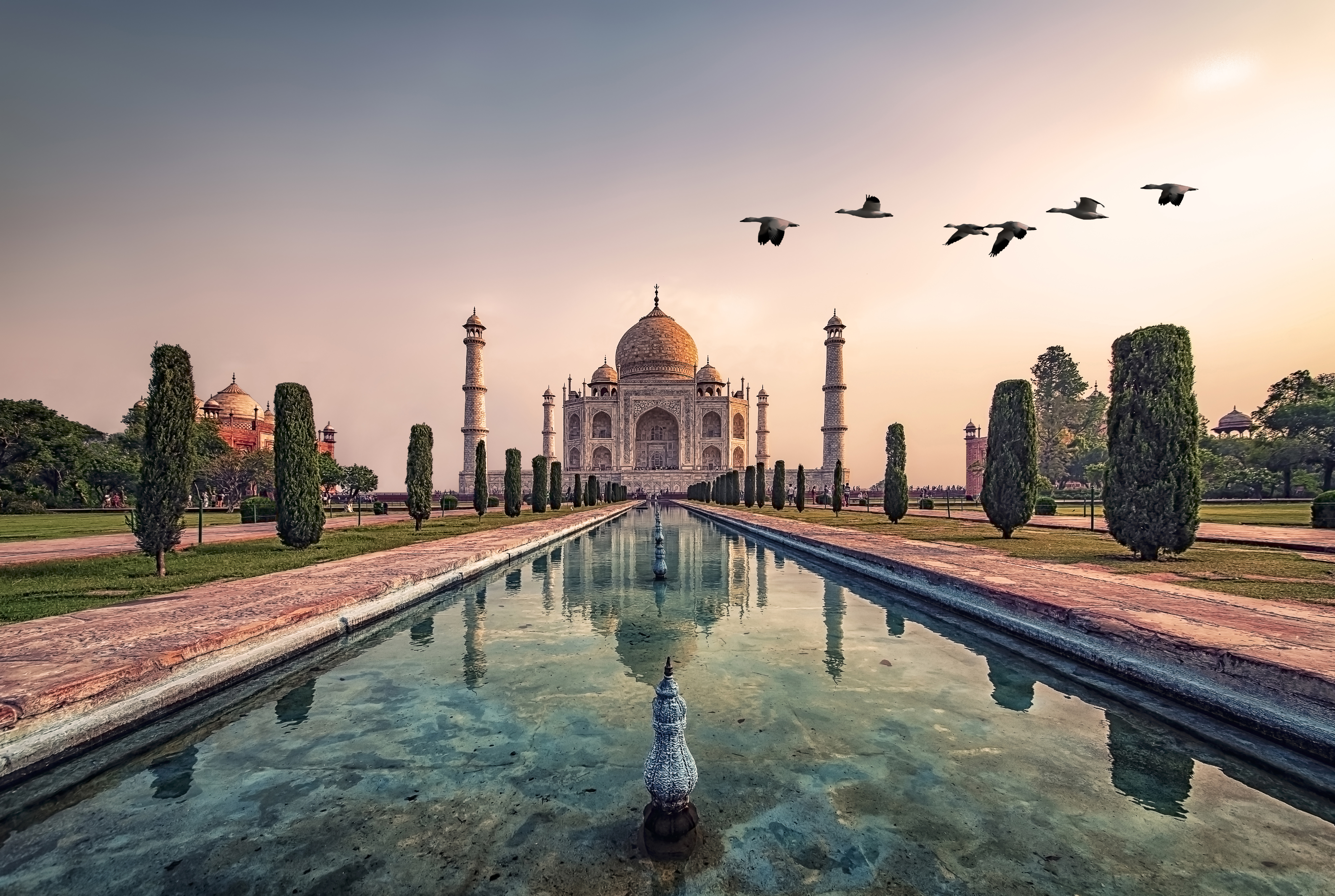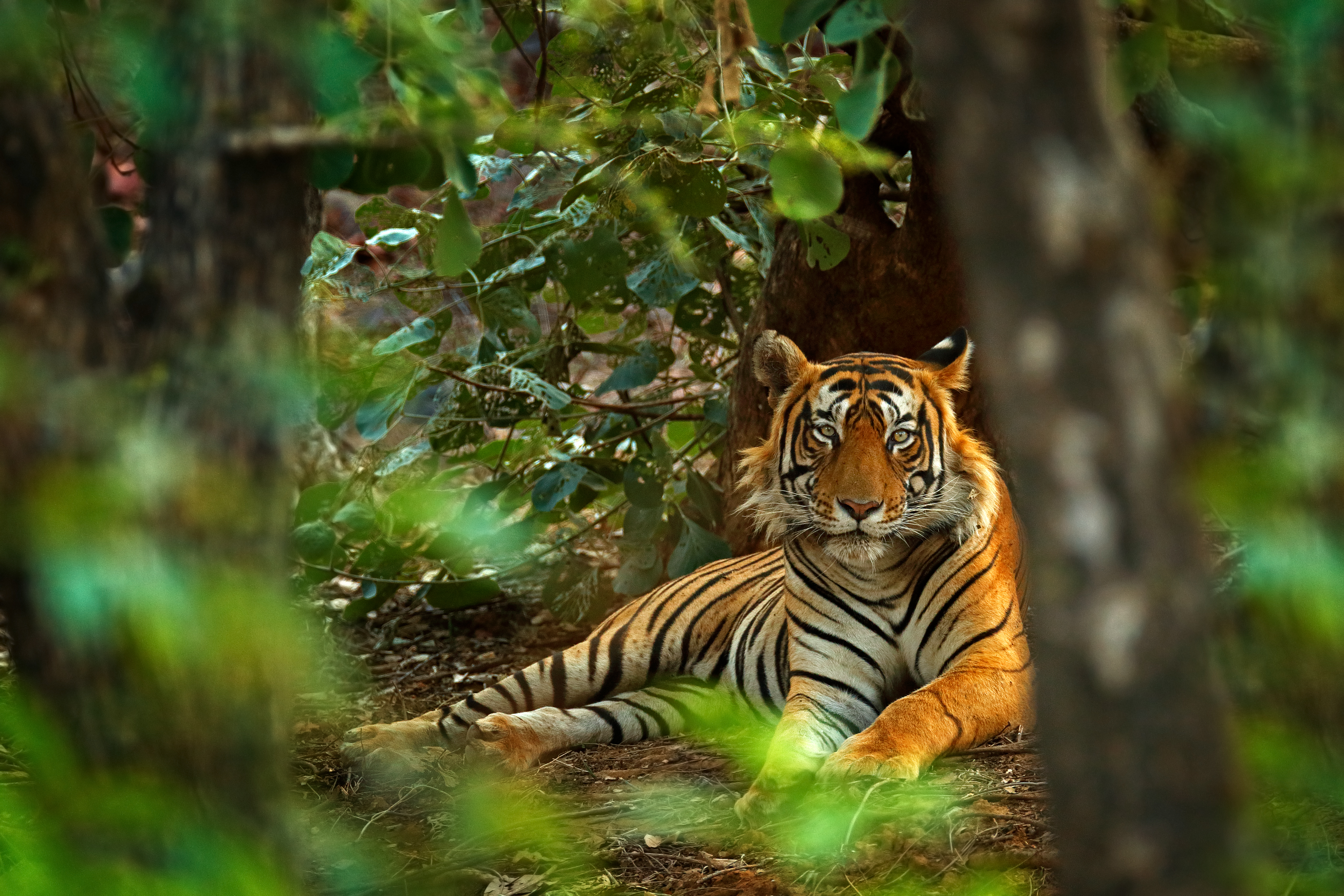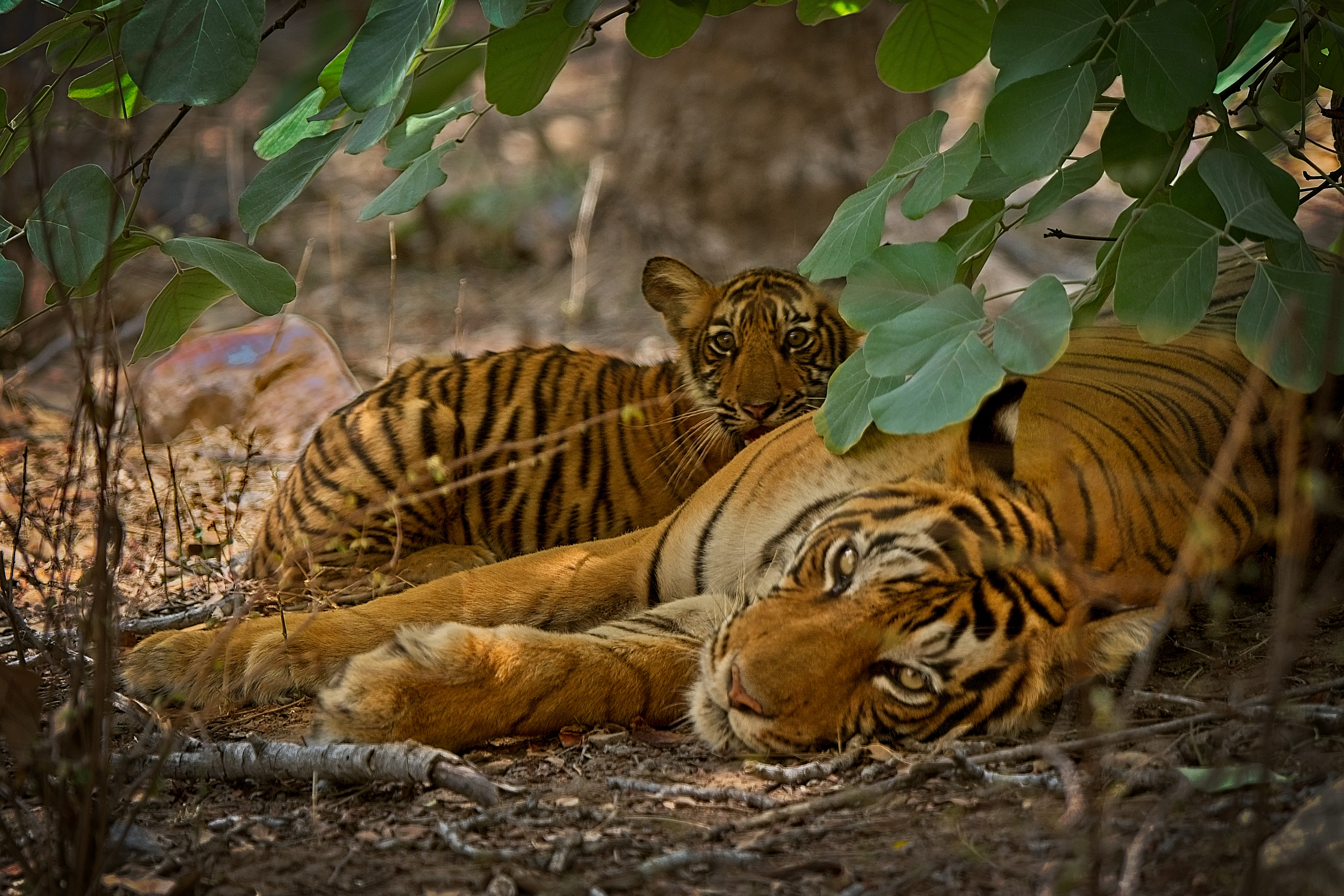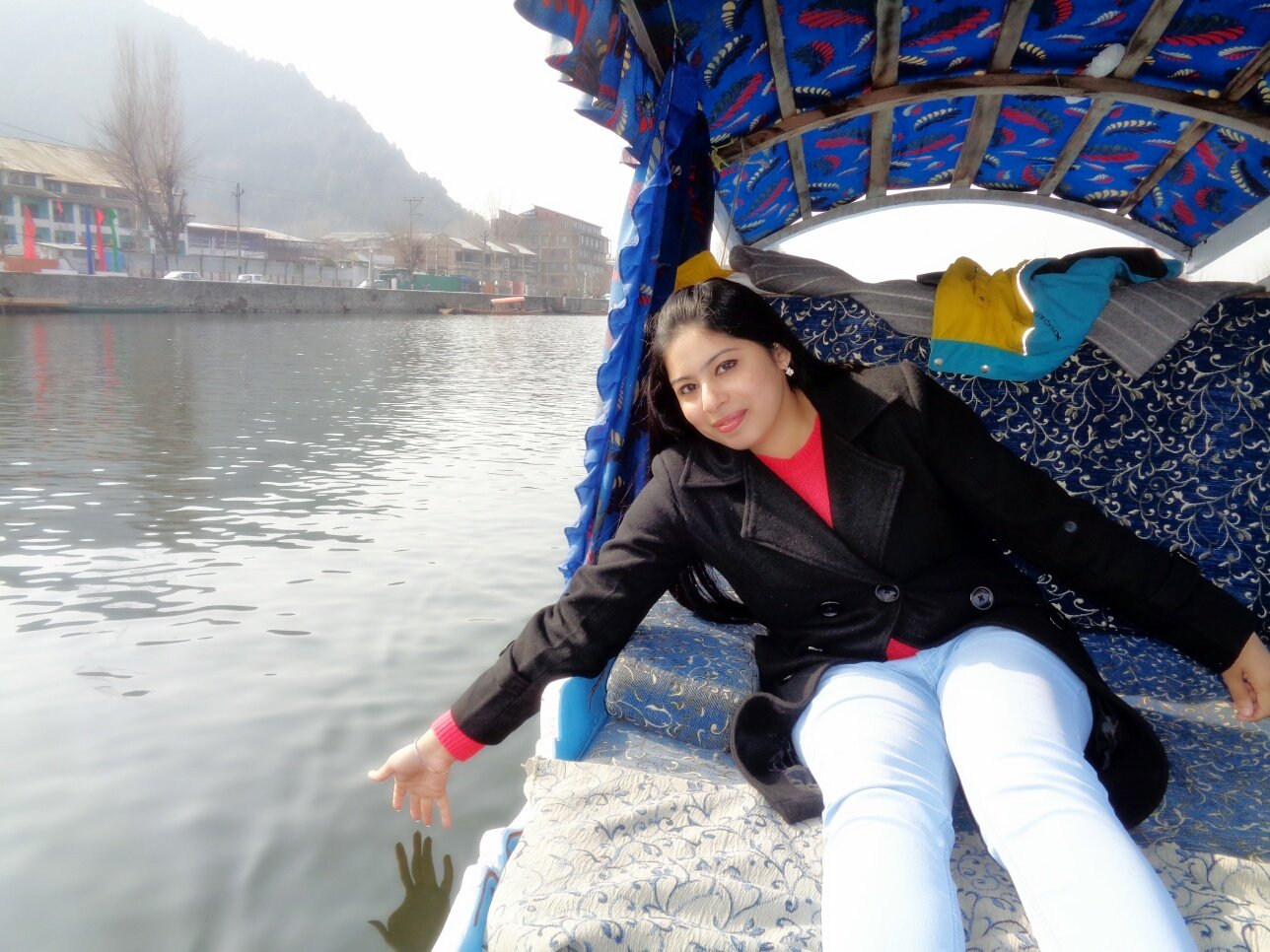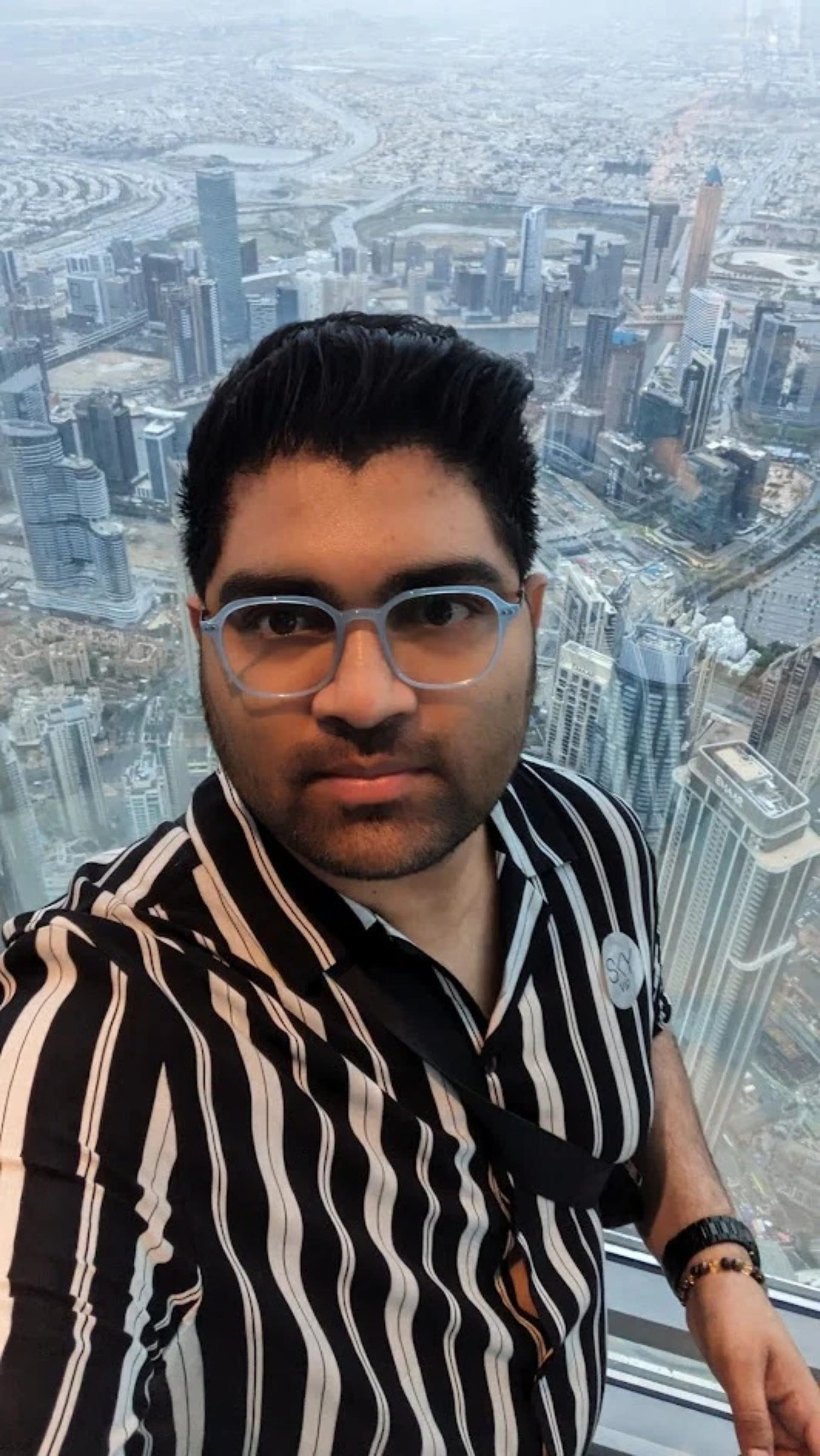The best time to visit is October to March, when the weather is cooler and ideal for sightseeing.
Discover Tailor-Made India Vacations
From majestic temples to vibrant festivals, a trip to India offers endless wonders.
India is a land of striking contrasts, from the electric energy of cities like Delhi and Mumbai to the peaceful beauty of tropical Kerala and sacred atmosphere of Varanasi. Whether you're drawn to vibrant street life, breathtaking architecture, or spiritual journeys, India offers a tapestry of unforgettable experiences.
With more than 40 UNESCO World Heritage Sites, India’s cultural treasures are unmatched. Marvel at the Taj Mahal at sunrise with a private guide, explore the majestic forts and palaces of Jaipur, and wander through ancient cities steeped in history.
Featured Highlights
- Greeting dawn at the Taj Mahal, one of India’s most iconic sights, with a private guide to avoid the crowds
- Living like royalty in the heritage palaces of Rajasthan, full of old-world charm and living history
- Cruising the serene backwaters of Kerala aboard a luxury houseboat
- Spotting wild Bengal tigers on a thrilling safari in Ranthambore National Park, a renowned wildlife sanctuary
- Joining a spiritual ceremony on the Ganges in Varanasi, a truly moving experience that sticks with you long after you’ve returned home
- Tasting your way through Delhi’s bustling markets with a local chef by your side
Featured India Trip Ideas
Planning a trip to India can feel overwhelming. There is just so much to see, do, and taste.That’s where a tailor-made vacation truly shines. Instead of squeezing everything into a one-size-fits-all itinerary, you get the freedom and flexibility to explore India’s rich diversity at your own pace.
Read More
Signature India Golden Triangle
Jaipur, Agra, Taj Mahal, and DelhiSecrets of India: A Women's Journey
Delhi, Udaipur, Jaipur, Agra, and Taj MahalLet northern India unfold before you on a journey rich in heritage, colour and sensory wonder. Begin in Delhi, where Mughal grandeur and colonial charm collide. Wander through Old Delhi’s chaotic bazaars and savour its street food secrets before stepping...
Highlights of India: Delhi, Rajasthan & Mumbai
Mumbai, Udaipur, Jaipur, Agra, Taj Mahal, and DelhiIndia Odyssey
Delhi, Ganges River, Varanasi, Agra, Taj Mahal, and JaipurDeluxe India Golden Triangle & Ranthambore
Jaipur, Ranthambore National Park, Agra, Taj Mahal, and DelhiIndia’s Golden Triangle is so called due to the linking of the three important tourist cities of Delhi, Agra and Jaipur making a triangular shape on the map.
Delhi, the capital, is made up of Old and New Delhi. Colourful Old Delhi teeming with...
India In Style: Tigers & Taj Resorts
DelhiThis 8-day round trip from Delhi starts by immersing you in India’s bustling capital, then takes you onward to spectacular wildlife adventures.
Delhi is a centre for India’s politics, culture and history, but it can also overload the senses. Take...
Don't see the
perfect trip idea?
Request a custom quote.
Turn your travel dreams into reality with Goway. Our customized vacations take travellers to all corners of the world.
What do Goway's travellers say?

Get to know India before you go.
Best Time To Visit
India is a year-round destination, but your experience can vary greatly depending on the season and what part of the country you’re headed to.
The cool season (October to March) is the most popular time to visit. With pleasant weather across much of the country, it’s ideal for sightseeing, cultural festivals, and exploring cities, deserts, and historical sites. Think sunrise at the Taj Mahal or exploring Jaipur’s forts without breaking a sweat.
The hot season (April to June) brings rising temperatures, especially in central and southern regions. The heat in urban areas makes this a perfect time to head for the Himalayas, where the mountain air is cooler, crisp and refreshing.
The monsoon (June to September) transforms the landscape into a lush green paradise. While rain can be unpredictable, it's a peaceful time to explore popular places like Kerala or the Western Ghats, with fewer crowds and great deals to help stretch your travel budget. Just pack an umbrella and your sense of adventure.
Check out our guide to the Best Time to Visit and let us help you choose the perfect season for your India trip.
What do the experts say?
What I love most about visiting India is how alive everything feels. The colours, the food, the people. Every place has its own vibe and story. One moment you’re in a quiet temple, the next you’re in a bustling street market. It’s chaotic in the best way
My favourite drinks are aam panna, a traditional Indian summer drink made from raw mangoes, known for its refreshing taste and cooling properties, and mango lassi, the iconic Indian yogurt drink
Places To Go
Handcrafted journeys to our most popular places to visit in India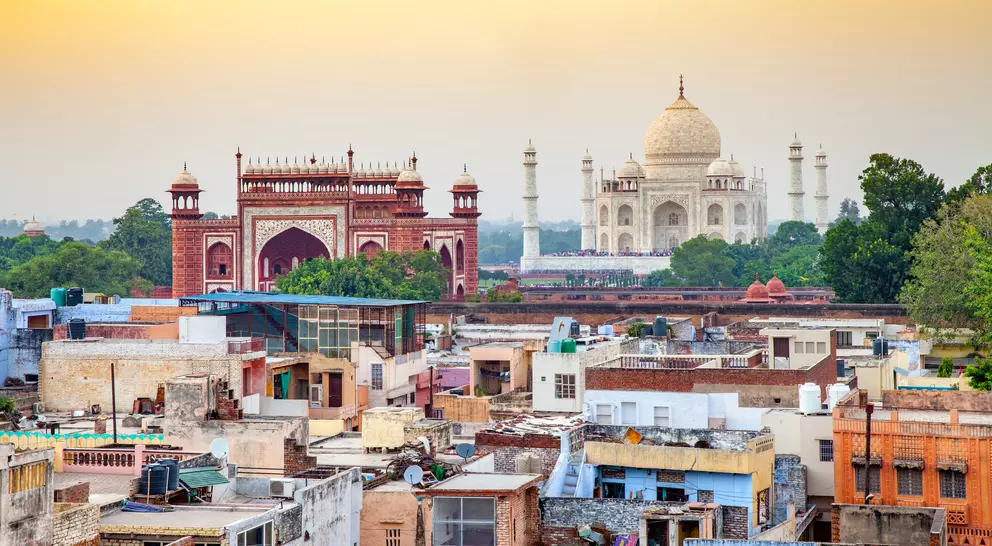
Agra
Just 200 km (125miles) south of Delhi, Agra is situated on the banks of the Yamuna River, in the...
Just 200 km (125miles) south of Delhi, Agra is situated on the banks of the Yamuna River, in the northern Indian state of Uttar Pradesh and is a must-see on India tours.Agra’s golden age began during...

Jaipur
While on India tours, visit Jaipur which is located southwest of Delhi and is the largest city in...
While on India tours, visit Jaipur which is located southwest of Delhi and is the largest city in the state of Rajasthan in northwest India. Built-in the 18th century as India’s ‘first planned city,...

Khajuraho
Khajuraho is a town located in the state of Madhya Pradesh, about 620 km southeast of Delhi and...
Khajuraho is a town located in the state of Madhya Pradesh, about 620 km southeast of Delhi and makes an interesting stopover on India tours.Khajuraho is known for the Khajuraho Group of Monuments,...
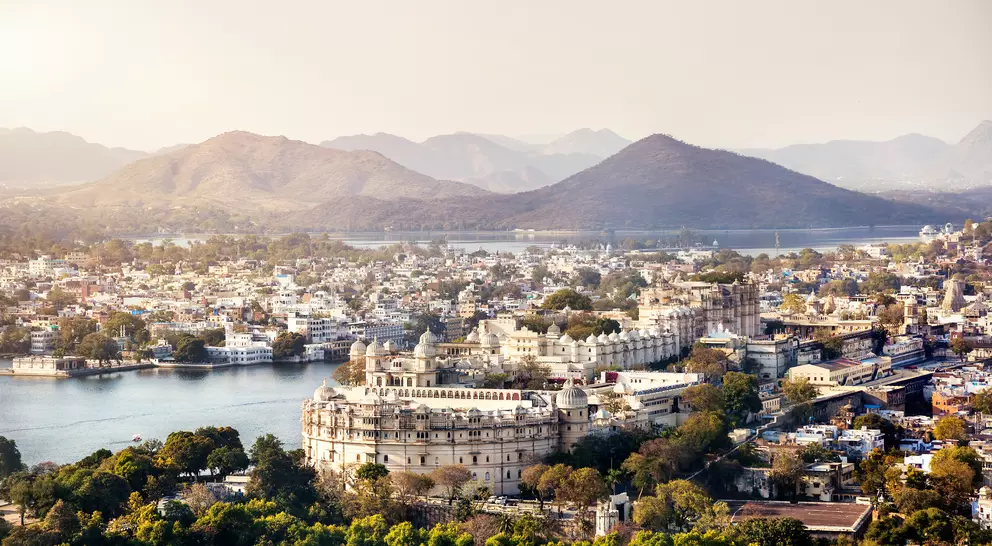
Udaipur
Considered the most romantic city in India, Udaipur is situated in the heart of the Aravalli...
Considered the most romantic city in India, Udaipur is situated in the heart of the Aravalli Mountains in the state of Rajasthan and is famous for its lakes and palaces on Indian tours.Considered...

Ganges River
While on India tours, you will possibly come across the Ganges River, also known as the River Ganga...
While on India tours, you will possibly come across the Ganges River, also known as the River Ganga which is transboundary and runs through India and Bangladesh. Measuring 2,525 km (1,569 mi), the...
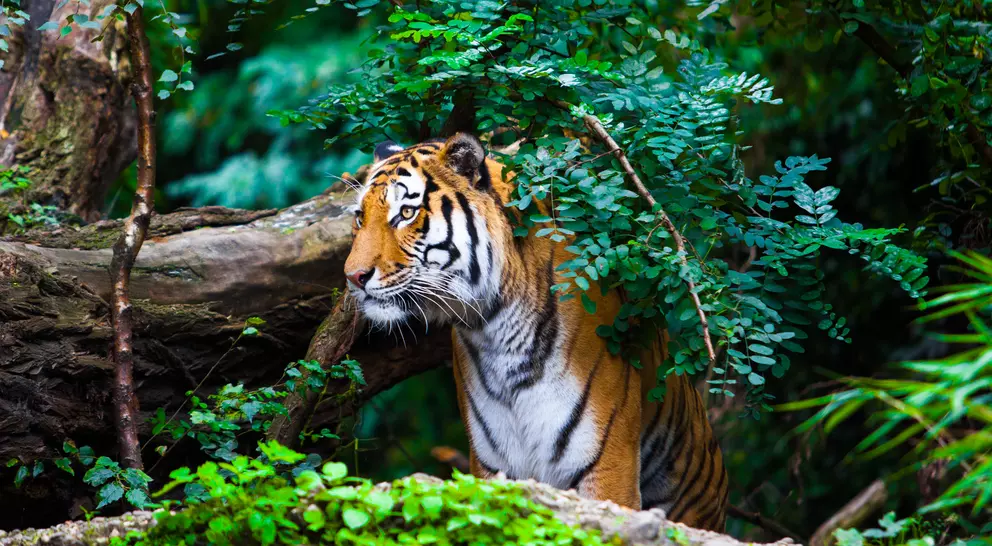
Ranthambore National Park
While on India tours, do consider a visit to Ranthambore National Park which is the largest...
While on India tours, do consider a visit to Ranthambore National Park which is the largest national park in northern India. Located 180 km (112 miles) southeast of Jaipur, in the state of Rajasthan,...
Travel Styles
Explore India by Travel Type
Ways to Travel
Discover your perfect travel style—crafted for every dream and journey.

Themes
Immersive adventures shaped by passion, such as food, culture, wellness, and wild discovery.

Collections
Curated journeys that capture the spirit, beauty, and essence of travel.

Featured
Extraordinary experiences handpicked to inspire, delight, and spark your wanderlust.

Ways to Travel
Discover your perfect travel style—crafted for every dream and journey.

Themes
Immersive adventures shaped by passion, such as food, culture, wellness, and wild discovery.

Collections
Curated journeys that capture the spirit, beauty, and essence of travel.

Featured
Extraordinary experiences handpicked to inspire, delight, and spark your wanderlust.
Frequently Asked Questions
What is the best time to visit India?
How many days should I spend in India?
You should plan to stay at least 10 to 14 days so you can explore key regions like the Golden Triangle or South India at a relaxed pace.
Is India safe for tourists?
Yes. India is generally safe, especially in tourist areas. Like anywhere, stay aware, respect local customs, and use trusted transport and accommodations.
Do I need a visa for India?
Most travellers do need a visa. An eVisa is available online for citizens of many countries and is easy to apply for.
What is the Golden Triangle in India?
It’s a popular route covering Delhi, Agra, and Jaipur, which is perfect for first-time visitors who are interested in history and culture.
Can I see tigers in India?
For sure. Your best bet is to visit national parks like Ranthambore, Bandhavgarh, or Kanha for a chance to see wild tigers on safari.
What is India famous for?
India is known for its diverse culture, ancient temples, vibrant festivals, delicious food, and of course, the Taj Mahal.
How do I travel around India?
Travel by domestic flights, trains, or private cars. Trains are iconic but book early. Flights will save you time for longer distances.
What festivals can I attend in India?
There are many, but near the top of your to-do list should be Diwali (Festival of Lights), Holi (Festival of Colours), or regional festivals like Onam in Kerala or Pushkar Camel Fair in Rajasthan.
What currency is used in India?
The Indian Rupee (INR) is the official currency. Carry small notes for markets and local transport.
Where is Kerala?
Kerala is in southern India (near bottom tip of the country). It is known for its scenic backwaters, beaches, tea plantations, and easygoing charm.
Can I combine India with other nearby countries?
Absolutely, Many visitors add northern neighbours Nepal or Bhutan to their India itinerary for a broader Himalayan experience, or Sri Lanka and the Maldives to the south for a tropical add-on.
Unlock more by subscribing to our newsletter
With our newsletter, you’ll get access to regular communications that inspire you and help you explore the world your way
